Introduction
Typography
- Fonts
- Text and image
- Technopaegnia
Woodcuts
Cinematic visual logic
> Moving bodies
> Double page spread
> Filmic sequences
Architecture
Gardens and landscapes
Other editions
Mysterious messages
Eros and metaphor
Technical innovations
External links
Cinematic visual logic
One of the features of the Hypnerotomachia that Liane Lefaivre uses to argue for the Alberti attribution is the cinematic visual logic at work in the book, based on Alberti’s interest in capturing movement. She bases her argument on the passages in Alberti’s On Painting devoted to movement, and on his "dimostrazioni," early forerunners of modern cinema. (see pp. 142-149 L. Lefaivre’s Leon Battista Alberti’s Hypnerotomachia Poliphili). Copyright © 1997. The MIT Press. All rights reserved.
Moving bodies
Leon Battista Alberti, in his De pictura, had argued that
painters should depict human figures in movement. The
illustrations of the Hypnerotomachia Poliphili appear as
applications of this tenet. Our team here at the DKS has
taken this literally, and has made some of the moving
bodies actually spring to life.
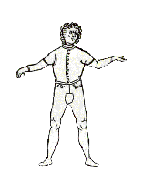
The dancer

Poliphilo and the Dragon
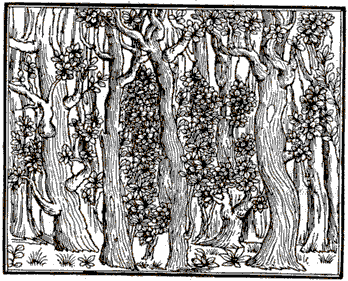
Poliphilo in the woods
Double
page spread
This obsession with movement is probably responsible for
the invention of the double page spread, no doubt a
feature of the original Alberti manuscript, enabling the
representation of bodies moving from one page onto the
next.
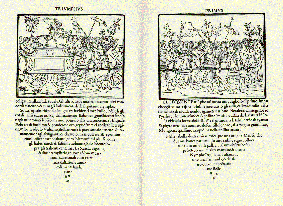
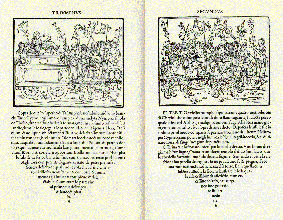
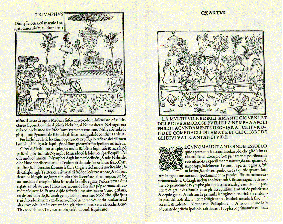
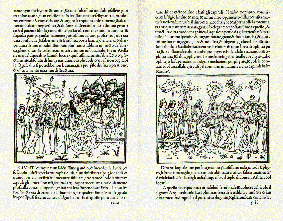
Filmic
sequences
Alberti was one of the early inventors of cinema. His
precocious cinematic forma mentis
lead him to represent several episodes in the
Hypnerotomachia through a sequence of images, like
consecutive frames on a film. Here are some examples:

The union in the temple.
(Click on the image to see an enlargement.)

Eros punishing the chaste nymphs.
(Click on the image to see an enlargement.)

Poliphilo swoons and is revived.
(Click on the image to see an enlargement)